Raitt wrecks
The Raitt Master Mariners page provided some information about the difficulties and hazards that ship masters faced when sailing - even close to shore in home waters. My great grandfather, David Dorward Raitt, was shipwrecked at least twice; his brother James Dorward Raitt was shipwrecked at least once; and their father’s brother-in-law Alexander Croal drowned in a shipwreck. Their father's brother's son Alexander Raitt, also a master mariner, died in Elsinore, Denmark having been taken ill on a voyage there. This page will provide some further details about the wrecks our ancestors were involved in as reported in the local press. For good measure, the launch of the Water Lily is also included at the bottom of this page - this was the ship that James Dorward Raitt captained on its maiden voyage after losing the Rosebud.
----------
Under the headline “Loss of the Arbroath schooner Rosebud and three of the crew”, the Dundee Courier for Tuesday, 26 October 1869 announced:
“We regret to learn by a telegram that the fine schooner Rosebud, of Arbroath, was totally wrecked on Saturday at Kyrkesund, near Gothenburg, and three of the crew lost, the captain and steward alone being saved. The Rosebud was a schooner of 92 tons register, and was the property of Mr James Scott, shipowner, Arbroath. She landed a cargo of linseed at Dundee lately, and went to Tayport, where having taken in a cargo of coal for Koningsberg, she sailed on Saturday week. She was, like so many other vessels, caught in a severe gale, and had to run into the Forth. On the gale abating she left, and had reached the above locality on Saturday the 23d, where she was lost, though under what circumstances is not yet known. The Rosebud was built at Arbroath, and was classed A1 at Lloyd’s. She was insured in the local clubs. She was commanded by Captain Raitt, and had a crew of five in all. The captain is saved, as also an ordinary seaman who acted as steward. The mate and two seamen are reported to be lost. The mate and one of the men belonged to Dundee, while the other belonged to St Andrews. The vessel was chartered by Messrs Robertson Brothers, East Dock Street.”
A few days later, on Tuesday, 2 November 1869, the Dundee Courier published a piece under the heading “The Loss of the Rosebud” shedding more light on the incident.
“A letter from Captain Raitt of this ill-fated schooner has been received by the owner, from which we gather the following particulars: - The Rosebud was bound for Koningsberg with a cargo of coal. She was sailing on Saturday afternoon along the coast of Sweden while a heavy gale was blowing and a tremendous sea was running. About six o’clock a revolving light was seen, which was supposed to be on the Jutland coast. At same time a red light was seen, supposed to be that of a passing vessel. Captain Raitt having consulted his chart, found that he was not on the Jutland coast, and seeing broken water, caused the vessel to be put round; but ere she had got so far as to catch the wind she struck stern on to a large rock, knocking away her rudder and thus becoming helpless. She then fell on to the rock with her broadside, when first one of the seamen and then the second leapt off to the rock, but were at once swept into the raging sea, and never seen. The captain and mate were shortly afterwards (and after the vessel had swerved some distance off and began to sink) washed overboard. The captain gained a footing on the rock, but never saw the mate again. The ordinary seaman, a man named Stewart, who acted as steward on board the vessel, lashed himself to the main rigging, where he remained all that night. Meantime Captain Raitt’s sufferings were intense. He was almost naked, and on a rock, washed by every wave. He had no idea that any one survived but himself, and it was early in the morning that he heard a scream and looking up found that Stewart was still alive. At daylight the wreck was observed from the coast, about a mile distant, when a boat came off, and with some difficulty rescued both the unfortunate men. Owing to the high seas the boat could not approach either the rock or the wreck, and a line was thrown, by which the men were drawn towards the boat. The place where the wreck took place is about eight miles from a place called Marstrand, and the rock on which she struck is at least a mile from the shore. The vessel, after drifting off from the rock, sunk bow foremost, till the water was halfway up the foremast. She remained in that state, and thus the safety of the steward.”
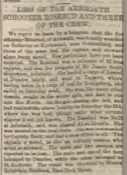
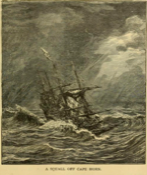
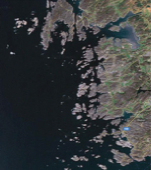
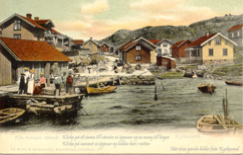
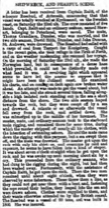
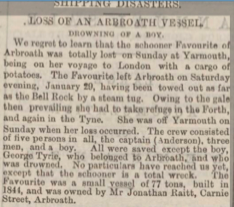
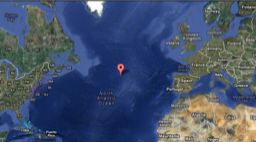

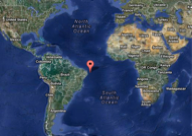
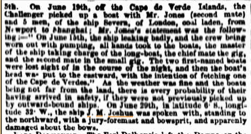
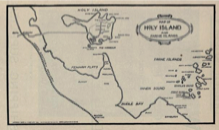
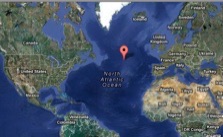
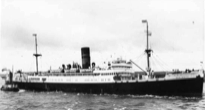
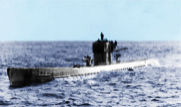
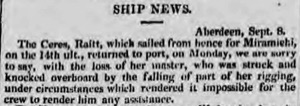
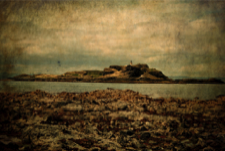
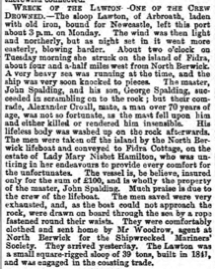
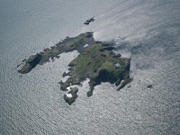
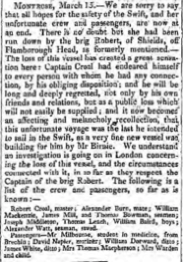
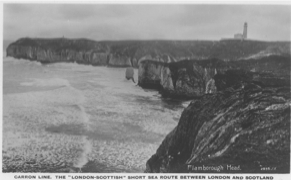
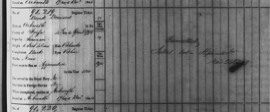
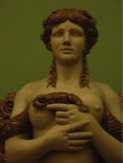
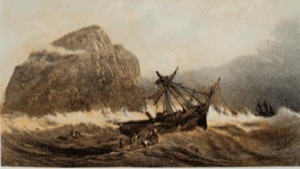
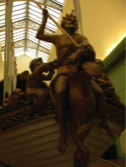
Launch of Water Lily
The Dundee Courier for Saturday, 19 March 1870 provides a nice description of a vessel of the times:
“A finely-modelled schooner, the property of Mr Sivewright, merchant, High Street, was launched from the yard of the Arbroath Shipbuilding Company yesterday in the presence of a very large concourse of spectators. On leaving her birthplace the name of Water Lily was bestowed on her by Miss Sivewright, daughter of the owner. This is a find handy vessel of about 90 tons, N.N.M., less the deduction made under the recent Act of Parliament for forecastle space. She is of the same builder’s measurement as the Surprise, and built on similar lines. She has a clipper bow and round stern, and her general aspect is suggestive of speed. Her dimensions are as under: - Length of keel, 75.5 feet; length over all, about 80 feet; breadth of beam, 20 feet; and depth of hold, 10 feet. She is copper fastened throughout, built under inspection, and is classed 8 years at Lloyd’s. She will be commanded by Captain Raitt, formerly of the Rosebud. Her appearance when afloat was graceful. She was constructed from the design of Mr Gouk. She sports an emblematical figurehead of a female, the workmanship and design of Mr Clark, carver, Montrose.”
Not only was James Dorward Raitt Master of the Rosebud when she was wrecked, but he had also served as mate aboard the other ship mentioned above, the Surprise. And interestingly enough, his brother David Dorward Raitt had also served on both ships as Boy (though not at the same time as James), and their cousin Alexander Raitt was both Mate and Master of the Surprise for some years before his death at Elsinore.
And mention should be made of Cornelius Rait, ordinary seaman, who is listed as one of two killed in the Return of Killed and Wounded of His Majesty’s Sloop Royalist, in Action, with the Weser French Frigate, on 21 October 1813.
And much more recently, William Allan Raitt, born 1898, died aged 44 on 28 Nov 1942 after being torpedoed by U-177 off the coast of South Africa. William was in the Merchant Navy and Second Engineer Officer aboard the troop transport vessel Nova Scotia. His parents were listed as Allan and Annie Raitt, and his wife as Florence Raitt, of Liverpool. His father may well be the Allan Raitt, referred to on the Arbroath Mariners page.
At 07.15 hours on 28 Nov, 1942, the unescorted Nova Scotia (Master Alfred Hender) was hit by three torpedoes from U-177, under the command of Robert Gysae, and sank burning by the bow within 10 minutes southeast of Lourenço Marques. The Germans notified the Portuguese who sent the frigate Alfonso de Albuquerque from Lourenço Marques. The ship rescued 194 survivors out of the complement of 1052 which included 780 Italian civilian internees. Further information can be found on the Uboat website.
My great great grandfather’s brother-in-law, David Dorward (1795-1852), was also involved in a shipwreck, although nothing is known about it apart from the terse entry on his (new?) mariner’s ticket to the effect that the previous one had been “Cancelled. Ticket lost in shipwreck”.
----------
There are a couple of other Raitts who were killed in wrecks on one sort or another. The Caledonian Mercury for Saturday 11 September 1824 reported that the Ceres, under the command of Captain Raitt, which had sailed from Aberdeen for Miramichi on 14 August, had returned to port on the previous Monday, with the loss of her master, who was struck and knocked overboard by the falling of part of her rigging under circumstances which rendered it impossible to the crew to render him any assistance (see more about him under Other Raitt Mariners.)
It may have been Alexander Croal’s cousin, Robert Croal, born in Arbroath on 22 September 1794, also a master mariner, who was master of the Swift on her last voyage, when she was run down by the brig Robert off Flamborough Head (Yorkshire) in early March 1815 with the loss of all crew and passengers (one of who was a mariner named William Dorward). A news item in the Caledonian Mercury for Monday 18 March 1816, timelined Montrose 15 March 1816, announced:
“We are sorry to say all hopes for the safety of the Swift, and her unfortunate crew and passengers, are now at an end. There is no doubt but she has been run down by the brig Robert, of Shields, off Flamborough Head, as formerly mentioned. The loss of this vessel has created a great sensation here: Captain Croal has endeared himself to every person with whom he had any connection, by his obliging disposition: and he will be long and deeply regretted, not only by his own friends and relations, but also as a public loss which will not easily be supplied; and it now becomes an affecting and melancholy recollection, that this unfortunate voyage was the last he intended to sail in the Swift, as a very fine new vessel was building for him by Mr Birnie. We understand an investigation is going on in London concerning the loss of this vessel, and the circumstances connected with it, in so far as the respect the Captain of the brig Robert. The following is list of the crew and passengers, so far as is known:-”
The Lawton – a forty year old wooden, square-rigged, 30 ton sloop owned and skippered by John Spalding and bound for Newcastle from Arbroath with a crew of three and carrying scrap iron – got into difficulties in a force eight north easterly gale off the uninhabited volcanic island of Fidra in the outer Forth estuary on the night of 29 November 1875. The vessel became stranded and the shipping reports said that it was a total loss. The master and his son were saved, but one of the crew drowned. The unfortunate seaman was Alexander Croal, aged 75 years, a widower from Arbroath, a master mariner, and the brother-in-law of my great great grandfather John Raitt (1805-1880), also a master mariner. His body was not found until some time later, as was reported in the Dundee Courier for 2 December 1875. A lighthouse was subsequently erected on the rocky island in 1885.
On his death extract, Alexander’s occupation is given as seaman mate, marine service, and it states that he drowned on 29 November 1875 at around 2am. His residence was given as 4 East Mary Street, Arbroath. The informant was the Lawton owner and master John Spalding who lived at 19 Catherine Street, Arbroath. The death extract goes on to say that at the time the death was registered on 7 January 1876, the body had not been found. In the 1871 census Alexander is recorded as being at the Old British Hotel in Ladyloan, Arbroath, aged 68, a widower and unemployed seaman. His wife Susan had died just two months prior.
It seems that John Spalding himself may have also gone to a watery grave. A stone in Arbroath Western cemetery gives the name of John Spalding, shipmaster, who died 20 January 1895 aged 65. Two of his sons also died at sea - one in November 1876, aged 20, and the other in February 1881, aged 17. Possibly Alexander Croal and John Spalding were related (which may have been why Alexander was on the boat) since I have come across a Croal-Spalding marriage. (See also under Arbroath Mariners.)
And a report in the Sydney Morning Herald for 22 September 1866 reports the following (also picked up by other newspapers.) “On June 29th, in latitude 6 S., longitude 32 W., the ship J M Joshua was spoken with, standing to the northward, with a jury-foremast and bowsprit, and apparently damaged about the bows.” My great grandfather, David Dorward Raitt, was onboard at the time as an Ordinary Seaman.
Some ten years later, as ship master, David lost two ships. The Barbara Young, a Perth schooner was on passage from Dundee to Newcastle with a cargo of iron rails when she got ashore on Ross sands on 22 January 1877. She was assisted off by Holy Island fishermen, who were awarded £50 for salvage, and went into Holy Island harbour for temporary repairs. Unfortunately, on the night of 3 Feb 1877 she drove from her anchors and became a constructive total loss. The crew were saved.
The other ship lost was the Champion, a Greenock barque, which was abandoned on 14 Nov 1880 in lat. 45 43N, long. 31 15W, whilst on passage from Miramichi (New Brunswick, Canada) for the Clyde with a cargo of pine deals, presumably because of heavy seas and weather damage. The crew were picked up by the Elisa of Bilbao, under Captain Laucirica, which was carrying a cargo of wheat from Montreal, and landed at Falmouth on 24 Nov 1880. The position was in mid-Atlantic close to where the Danube under Jonathan Raitt was wrecked.
Clearly the loss of his ship did not affect James Raitt’s subsequent commands (see at bottom), unlike Captain Philpot, master of the Ellen Murray schooner, which was lost off Lowestoft in February 1863 with two crew drowned. The newspaper report ends “The men lost everything, and we understand Captain Philpot will lose the whole of the earnings of 40 years.” From this, I infer that Captain Philpot was not merely the master of the Ellen Murray, but also the owner - seemingly a common situation, since Captain Jonathan Raitt of Arbroath also became a master mariner turned ship owner. A vessel owned by him, the Favourite, on which my great great grandfather’s nephew, Alexander Raitt, was the previous master, was lost. Another ship owned by him, the Danube, was under his command when she was lost almost exactly in the middle of the North Atlantic on a voyage home from Valparaiso via Matanzas on the north shore of Cuba.
Under Shipping Disasters, the Dundee Courier reported on 15 February 1870, under the heading “Loss of an Arbroath vessel: Drowning of a boy” the following:
“We regret to learn that the schooner Favourite of Arbroath was totally lost on Sunday at Yarmouth, being on her voyage to London with a cargo of potatoes. The Favourite left Arbroath on Saturday evening, January 29, having been towed out as far as the Bell Rock by a steam tug. Owing to the gale then prevailing she had taken refuge in the Forth, and again in the Tyne. She was off Yarmouth on Sunday when the loss occurred. The crew consisted of five persons in all, the captain (Anderson), three men and a boy. All were saved except the boy, George Tyrie who belonged to Arbroath, and who was drowned. No particulars have reached us yet, except that the schooner is a total wreck. The Favourite was a small vessel of 77 tons, built in 1844, and was owned by Mr Jonathan Raitt, Cairnie Street, Arbroath.”
The unfortunate master, Captain Anderson, had only a few months earlier taken over the command of the Favourite after the previous master, Alexander Raitt, had succumbed to an illness while on a Baltic trade run and had subsequently died at Elsinore, Denmark.
At least three newspapers, the (London) Morning Post for 9 April 1856, the Caledonian Mercury for 10 April 1856, and the Dundee, Perth, and Coupar Advertiser for Friday 11 April 1856 tersely reported the Danube’s loss.
“The Danube, of Arbroath, Raitt, from Matanzas to Leith, with molasses, was fallen in with, on 21st March, in lat. 42 N., long 33 W, in a disabled state, with decks swept, stanchions all gone, and loss of three men washed overboard, by the Early Bird, Box, arrived in the Thames, which took off the remainder of her crew.”
In point of fact, Jonathan may not have been the owner of the Danube at this time. He was listed as the shipowner of the Danube (the master was named Raitt - probably himself as other Raitts do not seem to have this vessel listed in their service records) when it arrived from Archangel in Dundee in early September 1861. So either the Danube was repaired after its problems in 1856 or else a new vessel with the same name was commissioned, either by him or acquired by him at a later date.
Additional details (such as the names of the crew) were later provided in other newspapers such as the Manchester Times for Saturday, 6 November 1869 and the North Devon Journal for Thursday, 11 November 1869. Under the heading “Shipwreck: a fearful scene” we read:
“A letter has been received from Captain Raitt, of the schooner Rosebud, of Arbroath, announcing that that vessel was totally wrecked at Kyrkesund, on the Swedish coast, on Saturday the 23rd ult. The crew consisted of five hands. Capt. Raitt and an ordinary seaman, named Stewart, belonging to Peterhead, were saved. The mate, Thomas Grandison, Dundee, who was married, and the two able seamen, David Edds, Dundee, and John Duncan, St. Andrews, were drowned. The Rosebud had sailed with a cargo of coal from Tayport for Konigsberg. Caught in the recent gales, she took refuge in the Firth of Forth, and on the weather moderating she resumed her voyage. On the morning of Saturday the 23rd ult., she made the Norwegian land, but in consequence of a dense haze which prevailed, it could not be distinctly made out what land it was. A revolving light which appeared seems to have led the master to suppose that it might have been the Jutland coast. He examined his charts, and on coming on deck again saw broken water ahead. An attempt was made to get the vessel about, but it was too late, and she struck several times, falling alongside a high isolated rock standing out in the sea a short distance from the shore. The two able seamen leapt towards the rock, but they were swept off by a sea and drowned. A minute or so afterwards the vessel fell away from the rock, and settled down. She was submerged up to the middle of her foremast. The master, mate, and ordinary seaman took to the starboard main rigging, and remained there for some time, during which the master stripped off nearly all his clothes, with the intention of swimming ashore. He and the mate came down the rigging with this purpose, but a sea swept them off, and the mate was drowned. The master got upon the rock with only his shirt on, and overcome by cold and exposure, he seems to have fallen into a kind of stupor. It was about seven o’clock at night when he got upon the rock, and he was awoke the next morning about six by a cry. This proceeded from the ordinary seaman, who had clung to the rigging during the night, but had then been washed away. Fortunately, with the assistance of Captain Raitt, he got upon the rock. There the two men remained until about eight o’clock, when they were observed by some fishermen. These threw them a line, as they could not get near them with a boat and, fastening the rope round their bodies, they leaped into the sea and were drawn ashore. Clothes were supplied to them, and their wants otherwise attended to by the British consul. The Rosebud was a vessel of 93 tons, and was built in 1860. She was insured.”
----------
A personal account of the Rosebud shipwreck and subsequent recovery of the sextant belonging to James Dorward Raitt, which is still in the family today, can be found in Elizabeth Raitt's story of her life. A poem recalling the Wreck of the Rosebud was penned by his grandson Robert Baldwin.
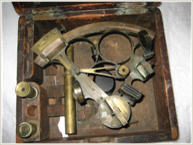
Recording of Wrecks
Although many records contain incidental references to the loss of merchant ships, almost no systematic attempts were made to collect information about them until the 19th century. The registration system established by the Merchant Shipping Acts of 1786, 1825 and 1854 required a ship’s loss to be officially recorded. The Transcripts of Registration transmitted to the Registrar of Shipping for 1786 onwards (BT 107 – BT 108, BT 110, indexes in BT 111) show when the registry was closed on a vessel which had been declared lost or missing. The nineteenth-century records often also include the date and place of the incident.
By the Merchant Shipping Act of 1854, the responsibility for maintaining a systematic wreck register was taken over by the Marine Department of the Board of Trade. The archive at the National Maritime Museum has the original Board of Trade Wreck Registers from 1854 to 1898, after which date they were abandoned. The volumes give the details of wrecked British vessels, including the name, official number, port of registry, port number and year of registration, tonnage, name of managing owner and master. In addition, it gives the date and place of wreck, some idea of the cause, and the number of lives lost. As an example of the detail given see the rescue of Dorward David Raitt by Captain Lauririca.
I don't know whose responsibility it was to report wrecks - probably the Captain if he survived or perhaps the rescuing Captain - but actually it seems that such records for several years starting in 1881 are missing - so we are lucky that it was in 1880 that David Dorward Raitt was rescued!
Two other incidents involving ships with the name Raitt or similar can be reported here.
A schooner named G. W. Raitt, built in 1871 by the Tobey & Littlefield Shipyard in Portsmouth, New Hampshire and owned by Thomas C. Coleman, under master C. R. Anderson struck Portsmouth Bridge over the Piscataqua River (which connects Portsmouth, NH with Kittery, Maine) on 18 August 1899 and was a total loss. Further information on this vessel and the new Hampshire/Maine connection can be found on the G. W. Raitt - schooner page.
Mention should also be made of the wreck in the Arctic of the whaling ship Raith of Leith (sometimes given in the press as Raitt) in 1819. The story of her loss, along with other whalers, to the ice can be found on the Raith of Leith whaler page.
